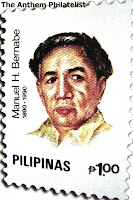Stamps from Suzhou
 I got hold of this wonderful tri-fold stamp set from Suzhou post inside the Humble Administrator's Garden for 75 Yuan. The first set of four stamps features the land and waters-capes of the garden, the middle set portrays the art of Suzhou and the miniature set shows an example of the flora of the garden. The garden had a long history of destruction and modification, changing under several owners (at least 7 times) along the way until inscribed as a UNESCO world heritage site in 1997.
I got hold of this wonderful tri-fold stamp set from Suzhou post inside the Humble Administrator's Garden for 75 Yuan. The first set of four stamps features the land and waters-capes of the garden, the middle set portrays the art of Suzhou and the miniature set shows an example of the flora of the garden. The garden had a long history of destruction and modification, changing under several owners (at least 7 times) along the way until inscribed as a UNESCO world heritage site in 1997. On the Zhuozhengyuan's site was first built a garden during the Shaoxing period (1131-1162) of the Southern Song Dynasty. Afterwards it changed ownership, and was destroyed or modified continually. It was the residence and garden of Lu Guimeng, a Tang Dynasty scholar. Later in the Yuan Dynasty it became the Dahong Temple's garden.
In 1513 CE, Wang Xiancheng, an Imperial Envoy and poet of the Ming Dynasty created a garden on the site of the dilapidated Dahong Temple which had been burnt during the Ming conquest. In 1510, he retired to his native home of Suzhou under the occasion of his father's death. He had experienced a tumultuous official life punctuated by various demotions and promotions, and gave up his last official post as magistrate of Yongjia county in Zhejiang province, and began to work on the garden. This garden, meant to express his fine taste, received close attention from the renowned artist, Suzhou native, and friend, Wen Zhengming. The garden was named after a verse by the famous scholar official of the Jin Dynasty, Pan Yue, it his prose, An Idle Life, "I enjoy a carefree life by planting trees and building my own house...I irrigate my garden and grow vegetables for me to eat...such a life suits a retired official like me well."
On the Zhuozhengyuan's site was first built a garden during the Shaoxing period (1131-1162) of the Southern Song Dynasty. Afterwards it changed ownership, and was destroyed or modified continually. It was the residence and garden of Lu Guimeng, a Tang Dynasty scholar. Later in the Yuan Dynasty it became the Dahong Temple's garden.
In 1513 CE, Wang Xiancheng, an Imperial Envoy and poet of the Ming Dynasty created a garden on the site of the dilapidated Dahong Temple which had been burnt during the Ming conquest. In 1510, he retired to his native home of Suzhou under the occasion of his father's death. He had experienced a tumultuous official life punctuated by various demotions and promotions, and gave up his last official post as magistrate of Yongjia county in Zhejiang province, and began to work on the garden. This garden, meant to express his fine taste, received close attention from the renowned artist, Suzhou native, and friend, Wen Zhengming. The garden was named after a verse by the famous scholar official of the Jin Dynasty, Pan Yue, it his prose, An Idle Life, "I enjoy a carefree life by planting trees and building my own house...I irrigate my garden and grow vegetables for me to eat...such a life suits a retired official like me well."
Wang's son lost the garden to pay gambling debts, and it has changed hands many times since. In 1631 CE The eastern garden was divided from the rest and purchased by , Vice Minister of the Justice Board. He added many modifications over the next four years, finishing work in 1635 CE. After completion it was renamed Dwelling Upon Return to the Countryside. The central garden was purchased by Jiang Qi, Governor of Jiangsu in 1738 CE. After extensive renovations he renamed it Garden Rebuilt. In 1860, it became the residence of a Taiping prince, Li Xiucheng , and it was remodelled, and the current aspect of the garden is said to be inherited from this period. Also in 1738 CE the Western Garden was purchased by Ye Shikuan Chief Histographer, and renamed The Garden of Books. The Garden of Books was purchased by a Suzhou merchant, Zhang Lüqian, in 1877 CE and renamed The Subsidiary Garden. In 1949 all three parts of the garden were rejoined by the Chinese government and subsequently opened to the public, then restored in 1952. In 1997 the garden was given UNESCO World Heritage status.






